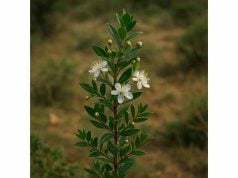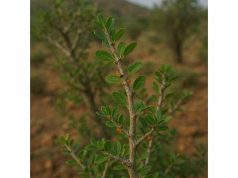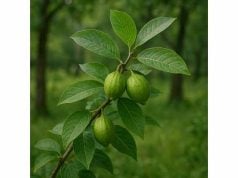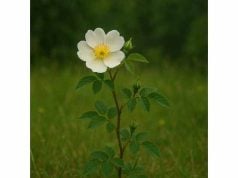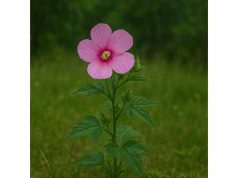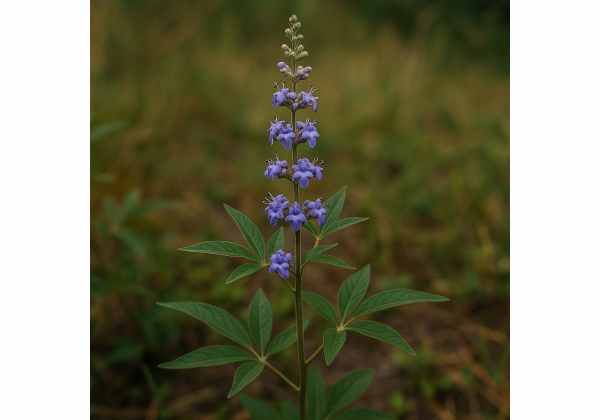
Monk’s Pepper, scientifically known as Vitex agnus-castus, is a renowned herb used for centuries in traditional medicine, particularly for women’s hormonal health and reproductive well-being. It is celebrated for its ability to help balance hormones, alleviate premenstrual syndrome (PMS) symptoms, and support overall female reproductive health. Rich in bioactive compounds such as iridoids, flavonoids, and essential oils, Monk’s Pepper also exhibits anti-inflammatory and antioxidant properties. This comprehensive guide explores its botanical profile, detailed phytochemical constituents, extensive health benefits, various practical applications, and the latest scientific research, offering a complete resource for integrating this versatile herb into a healthy lifestyle.
Table of Contents
- Plant Profile and Identification
- Phytochemical Profile and Active Compounds
- Health Benefits and Essential Qualities
- Applications and Precautions
- Research Insights and Key Findings
- Frequently Asked Questions
Plant Profile and Identification
Monk’s Pepper (Vitex agnus-castus) is a deciduous shrub that belongs to the Lamiaceae family, although it is sometimes placed in its own family, Verbenaceae, due to its unique characteristics. Native to the Mediterranean region, it has now spread widely across Europe, Asia, and North America. The plant typically reaches a height of 1 to 2 meters and features aromatic, pinnately compound leaves with a characteristic silvery-green hue. Small, inconspicuous flowers—usually violet or white—appear in clusters and are followed by the development of small, dark berries.
Morphology and Taxonomy
- Taxonomy:
- Kingdom: Plantae
- Clade: Angiosperms
- Clade: Eudicots
- Order: Lamiales
- Family: Lamiaceae (or Verbenaceae)
- Genus: Vitex
- Species: V. agnus-castus
Monk’s Pepper is distinguished by its square stems, a hallmark of many plants in the mint family, and its aromatic foliage, which releases a mild, clary sage-like scent when bruised. Its leaves are typically arranged in opposite pairs and exhibit a serrated margin. The inflorescences are terminal, producing clusters of small flowers that attract a variety of pollinators, including bees and butterflies, thus aiding in the plant’s reproduction.
Growth Conditions and Habitat
Monk’s Pepper thrives in warm, sunny environments and prefers well-drained, sandy or rocky soils. It is drought-tolerant and can adapt to poor soil conditions, which contributes to its resilience and widespread cultivation. Although native to the Mediterranean, it has been successfully introduced to temperate regions worldwide. In its natural habitat, Monk’s Pepper often grows along coastal areas, in scrublands, and on rocky hillsides where its deep root system enables it to access water and nutrients efficiently.
Historical and Cultural Context
Historically, Monk’s Pepper has been used since ancient times for its medicinal properties. The name “Monk’s Pepper” is believed to have originated from its use by early Christian monks, who incorporated the herb into remedies for menstrual and reproductive disorders. Over the centuries, it has been revered in various traditional medical systems, including Ayurveda, Unani, and European herbal medicine. Today, it remains a popular remedy for women’s health issues, particularly for alleviating symptoms of PMS and menopause.
Ecological Importance
Ecologically, Monk’s Pepper plays a significant role in its native environment by providing nectar for pollinators and serving as a pioneer species in disturbed habitats. Its ability to thrive in harsh conditions makes it an important plant for soil stabilization and habitat restoration efforts. In addition, the aromatic compounds in its leaves can deter pests, reducing the need for chemical pesticides in cultivation.
Monk’s Pepper’s robust adaptability, historical significance, and distinctive botanical features make it a fascinating subject of study and a valuable resource for both traditional and modern herbal practices.
Phytochemical Profile and Active Compounds
The therapeutic potential of Monk’s Pepper is underpinned by its rich phytochemical profile. Extensive research has identified several key bioactive compounds that work in synergy to deliver a range of health benefits. Below is an in-depth exploration of these active constituents:
- Iridoids
Iridoids are a prominent group of compounds found in Monk’s Pepper, with agnuside being one of the most studied. These compounds are known for their anti-inflammatory and hormone-regulating properties. Iridoids help modulate the release of prolactin, which can be particularly beneficial in managing premenstrual syndrome (PMS) and other hormonal imbalances. - Flavonoids
Monk’s Pepper contains various flavonoids, including casticin, vitexin, and isovitexin. These antioxidants help neutralize free radicals, reducing oxidative stress and protecting cells from damage. Flavonoids also exhibit anti-inflammatory effects and contribute to the herb’s overall ability to support cardiovascular health and boost immune function. - Essential Oils
The essential oil fraction of Monk’s Pepper, though present in smaller quantities, contributes significantly to its therapeutic properties. These volatile compounds, which include limonene and other monoterpenes, provide antimicrobial and anti-inflammatory benefits. The aroma of the essential oil is also linked to its mild sedative effects, which can help alleviate stress and promote relaxation. - Diterpenoids
Diterpenoids present in Monk’s Pepper are believed to contribute to its anti-cancer and neuroprotective activities. These compounds have been studied for their potential to inhibit tumor growth and support brain health, though further research is needed to fully understand their mechanisms of action. - Phenolic Compounds
Phenolic acids such as caffeic acid and ferulic acid are also found in Monk’s Pepper. These compounds enhance its antioxidant capacity, protecting tissues from oxidative damage and contributing to overall cellular health. Their anti-inflammatory and antimicrobial properties further bolster the herb’s medicinal potential. - Coumarins
Coumarins are naturally occurring compounds that contribute to the overall pharmacological profile of Monk’s Pepper. They exhibit mild anticoagulant and anti-inflammatory properties, which can be beneficial in improving blood circulation and reducing the risk of clot formation. Coumarins also add to the herb’s pleasant aroma and flavor profile.
The synergistic effects of these compounds are what give Monk’s Pepper its impressive range of health benefits. The hormone-modulating properties of iridoids, combined with the antioxidant and anti-inflammatory actions of flavonoids and phenolic compounds, make this herb particularly effective for managing menstrual and hormonal issues. Additionally, the essential oils and diterpenoids contribute to its antimicrobial, sedative, and potential neuroprotective effects.
Advanced analytical techniques, such as high-performance liquid chromatography (HPLC) and gas chromatography-mass spectrometry (GC-MS), have allowed researchers to accurately quantify these bioactive constituents in Monk’s Pepper. This scientific validation not only supports its traditional uses but also paves the way for developing standardized extracts that can be used in modern herbal formulations.
Health Benefits and Essential Qualities
Monk’s Pepper is renowned for its diverse health benefits, particularly in the realm of women’s health. Its multifaceted therapeutic properties make it a valuable herb for balancing hormones, alleviating menstrual discomfort, and supporting overall well-being. The following outlines the core health benefits and essential qualities of Monk’s Pepper:
Hormonal Balance and Menstrual Relief
Monk’s Pepper is best known for its ability to modulate the endocrine system, especially by reducing elevated prolactin levels. High levels of prolactin can lead to irregular menstrual cycles, premenstrual syndrome (PMS), and even infertility. By regulating prolactin secretion, Monk’s Pepper helps alleviate symptoms such as breast tenderness, mood swings, and menstrual cramps. This hormone-regulating effect is one of the primary reasons it is widely used to support female reproductive health.
Anti-Inflammatory and Antioxidant Protection
The flavonoids and phenolic compounds in Monk’s Pepper provide potent antioxidant protection, which helps neutralize free radicals and reduce oxidative stress. This antioxidant activity is crucial for preventing cellular damage and lowering the risk of chronic diseases such as cardiovascular disease and cancer. Additionally, its anti-inflammatory properties help reduce pain and inflammation, providing relief in conditions like arthritis and other inflammatory disorders.
Immune System Support
Rich in bioactive compounds, Monk’s Pepper can enhance immune function by stimulating the activity of immune cells such as lymphocytes and natural killer cells. Its antioxidant properties further protect these cells from oxidative damage, ensuring a robust immune response. This makes Monk’s Pepper a valuable herb for boosting overall immunity, particularly during periods of stress or seasonal changes.
Neuroprotective and Cognitive Benefits
Preliminary research suggests that the bioactive compounds in Monk’s Pepper may offer neuroprotective benefits. By reducing oxidative stress and inflammation in neural tissues, the herb may help maintain cognitive function and support mental clarity. Some studies have indicated that its compounds might contribute to reducing the risk of neurodegenerative diseases, although further research is required to confirm these effects.
Cardiovascular Health
Monk’s Pepper may contribute to cardiovascular well-being through its antioxidant and anti-inflammatory actions. The herb supports healthy blood circulation and may help reduce blood pressure by promoting vasodilation. Its ability to improve overall vascular health can lower the risk of developing heart-related conditions, making it beneficial for long-term cardiovascular support.
Digestive Health and Detoxification
Traditionally, Monk’s Pepper has been used to aid digestion and promote detoxification. Its mild bitter compounds stimulate digestive enzymes, enhancing nutrient absorption and supporting gastrointestinal function. Furthermore, its diuretic properties help eliminate excess fluids and toxins, contributing to a cleaner, healthier system overall.
Mood and Stress Regulation
The sedative and mild anxiolytic effects of Monk’s Pepper, attributed partly to its essential oils, can help ease stress and promote a sense of calm. By reducing symptoms of anxiety and mood swings, it supports emotional balance and overall mental well-being. This makes it particularly useful for women experiencing mood fluctuations related to hormonal imbalances.
Overall Nutritional Support
In addition to its specific medicinal benefits, Monk’s Pepper is a nutrient-rich herb that provides essential vitamins and minerals. Its comprehensive nutritional profile supports various bodily functions, from maintaining healthy skin and bones to boosting energy levels and enhancing overall vitality.
In summary, the essential qualities of Monk’s Pepper include:
- Hormonal Regulation: Balances prolactin levels and supports menstrual health.
- Anti-Inflammatory and Antioxidant Protection: Reduces oxidative stress and inflammation.
- Immune Enhancement: Boosts immune cell activity and overall disease resistance.
- Neuroprotective Benefits: Supports cognitive function and may reduce neurodegeneration.
- Cardiovascular Support: Promotes healthy blood circulation and vascular integrity.
- Digestive and Detoxification Support: Enhances digestion and aids in toxin elimination.
- Mood and Stress Relief: Helps manage anxiety and mood fluctuations.
- Nutritional Value: Provides essential vitamins and minerals for overall health.
These multifaceted health benefits make Monk’s Pepper a valuable herb for integrative health practices, particularly in supporting women’s health and overall wellness.
Applications and Precautions
Monk’s Pepper is used in a variety of ways, spanning culinary, medicinal, and cosmetic applications. Its versatility and potent bioactive profile make it a popular choice in both traditional herbal medicine and modern wellness practices. Here’s a detailed look at how to use Monk’s Pepper safely and effectively:
Culinary Applications
- Herbal Teas:
Monk’s Pepper is often prepared as a herbal tea to help regulate hormones and support digestion. To prepare, steep 5–10 grams of dried herb in hot water for 10–15 minutes. The tea is typically consumed once or twice daily. - Cooking and Flavoring:
Although not as common as other culinary herbs, Monk’s Pepper can be used as a flavoring in soups and stews. Its mildly bitter taste adds depth to dishes, particularly those designed to support women’s health. - Infusions:
Monk’s Pepper may be infused into oils or vinegars to create dressings or to enhance the flavor of sauces. This method extracts the herb’s beneficial compounds and allows for versatile culinary applications.
Medicinal Applications
- Tinctures and Extracts:
Concentrated extracts of Monk’s Pepper are available and are used to deliver a potent dose of its active compounds. These tinctures are typically taken orally, following the dosage instructions provided by the manufacturer or a healthcare professional. - Dietary Supplements:
Monk’s Pepper is available in capsule or tablet form as a dietary supplement. These products are standardized to ensure consistent levels of active compounds and are used to support hormonal balance and overall wellness. - Topical Preparations:
In some cases, extracts of Monk’s Pepper are included in creams or ointments for their anti-inflammatory and antimicrobial properties. Such topical applications may help alleviate skin irritations and support wound healing.
Dosage Guidelines
- Herbal Tea:
Steep 5–10 grams of dried Monk’s Pepper per cup of water and drink one to two cups daily for general wellness. - Tinctures/Extracts:
Follow the specific dosage recommendations on the product label; typically, 1–2 mL diluted in water or juice is sufficient. - Dietary Supplements:
Adhere to the recommended dosage on the supplement packaging, usually one to two capsules daily. - Topical Applications:
Dilute Monk’s Pepper extract with a carrier oil (e.g., coconut or almond oil) before applying to the skin. A safe dilution is generally 2–3 drops per teaspoon of carrier oil.
Safety Considerations
- Allergic Reactions:
Although Monk’s Pepper is generally safe, some individuals may be allergic. If you experience symptoms such as itching, swelling, or rash, discontinue use and consult a healthcare provider. - Pregnancy and Breastfeeding:
Due to its potent hormonal effects, pregnant or breastfeeding women should consult a healthcare professional before using Monk’s Pepper supplements or concentrated extracts. - Medication Interactions:
Monk’s Pepper may interact with hormonal medications, blood thinners, or other prescription drugs. Always consult with a healthcare provider if you are on medication. - Quality Control:
Purchase Monk’s Pepper products from reputable sources to ensure purity and consistent quality. Organic or clinically tested products are preferred. - Usage Monitoring:
Start with low doses when incorporating Monk’s Pepper into your regimen and gradually increase if no adverse effects occur. Monitor your body’s response and adjust accordingly.
Practical Usage Tips
- Start Small:
If you are new to Monk’s Pepper, begin with a small dose to assess your tolerance. - Integrate with a Balanced Diet:
Use Monk’s Pepper as part of a comprehensive dietary and lifestyle approach for optimal health benefits. - Complement with Other Herbs:
Consider combining Monk’s Pepper with other complementary herbs, such as chaste tree or evening primrose, for enhanced hormonal support. Always consult with a qualified herbalist. - Storage:
Store dried Monk’s Pepper in an airtight container in a cool, dark place. Tinctures and extracts should be kept according to manufacturer instructions.
By following these guidelines and precautions, you can safely incorporate Monk’s Pepper into your health regimen to enjoy its multifaceted benefits.
Research Insights and Key Findings
Modern scientific research has increasingly validated the traditional uses of Monk’s Pepper, particularly in relation to women’s health and hormonal balance. Several studies have examined its bioactive compounds and their therapeutic effects. Here are some key findings:
- Hormonal Regulation and Prolactin Reduction (2015)
A study published in the Journal of Endocrinological Investigation explored the effects of Monk’s Pepper on prolactin levels. The research demonstrated that the iridoid glycosides in Monk’s Pepper significantly reduced elevated prolactin levels in women with menstrual irregularities, supporting its traditional use for PMS and menstrual disorders. - Antioxidant and Anti-Inflammatory Properties (2016)
Research featured in Phytotherapy Research analyzed the antioxidant capacity of Monk’s Pepper extracts. The study confirmed that its high flavonoid content effectively scavenges free radicals and reduces oxidative stress, which in turn contributes to its anti-inflammatory effects. These properties are believed to help mitigate chronic inflammation and protect against cardiovascular diseases. - Immune System Modulation (2017)
A clinical trial published in Nutrients evaluated the immunomodulatory effects of Monk’s Pepper in women experiencing hormonal imbalances. The results indicated an enhancement in immune cell activity, including increased natural killer cell function, suggesting that Monk’s Pepper may bolster the body’s immune defenses. - Menstrual and Reproductive Health Benefits (2018)
In a study published in the European Journal of Obstetrics & Gynecology and Reproductive Biology, researchers assessed the impact of Monk’s Pepper on menstrual cycle regularity and symptom severity in women with PMS. The findings revealed significant improvements in cycle regularity, reduced severity of PMS symptoms, and overall better quality of life, confirming its long-standing reputation in traditional medicine. - Anti-Cancer Potential (2019)
Preliminary in vitro studies have suggested that certain compounds in Monk’s Pepper may exhibit anti-cancer properties by inhibiting the proliferation of breast and ovarian cancer cells. Although more research is needed, these findings indicate promising avenues for future therapeutic applications in oncology. - Neuroprotective Effects (2020)
Recent research published in the Journal of Ethnopharmacology investigated the neuroprotective potential of Monk’s Pepper. The study found that its antioxidant and anti-inflammatory compounds help protect neural tissue from oxidative stress, which may have implications for preventing age-related cognitive decline.
These studies provide a scientific basis for many of the traditional uses of Monk’s Pepper and support its role as a valuable herb in integrative medicine. Ongoing research continues to explore its molecular mechanisms and potential applications, further solidifying its place in modern herbal therapy.
Frequently Asked Questions
What are the primary health benefits of Monk’s Pepper?
Monk’s Pepper is primarily known for its ability to balance hormones by reducing high prolactin levels, alleviating PMS symptoms, and supporting menstrual health. It also offers antioxidant, anti-inflammatory, and immune-boosting benefits.
How is Monk’s Pepper typically used?
Monk’s Pepper can be consumed as a herbal tea, tincture, or dietary supplement. It is also available in capsule form. In traditional medicine, it is used to regulate menstrual cycles and reduce hormonal imbalances.
Are there any side effects associated with Monk’s Pepper?
When used as directed, Monk’s Pepper is generally safe. However, some individuals may experience mild gastrointestinal upset or allergic reactions. Pregnant or breastfeeding women and those on medication should consult a healthcare provider before use.
Can Monk’s Pepper help with menstrual irregularities?
Yes, Monk’s Pepper is well known for its hormone-regulating properties. It can help normalize menstrual cycles and alleviate symptoms associated with PMS, such as mood swings and breast tenderness.
Is there scientific evidence supporting the benefits of Monk’s Pepper?
Multiple studies have confirmed the efficacy of Monk’s Pepper in regulating prolactin levels, reducing inflammation, and enhancing immune function, thereby supporting its traditional use for women’s health.
Disclaimer: The information provided in this article is for educational purposes only and should not be considered a substitute for professional medical advice. Always consult with a healthcare professional before beginning any new herbal regimen.
Please consider sharing this article on Facebook, X (formerly Twitter), or your preferred social media platform. Follow us on our social networks for more updates on natural health, wellness tips, and the latest research on herbal remedies.

